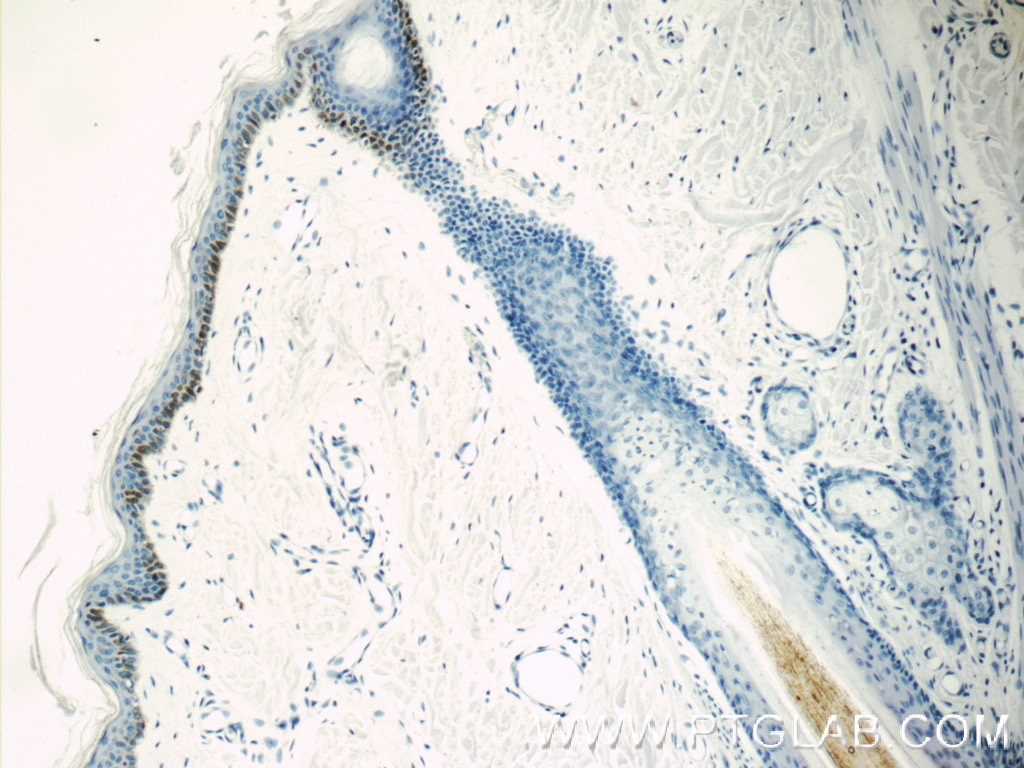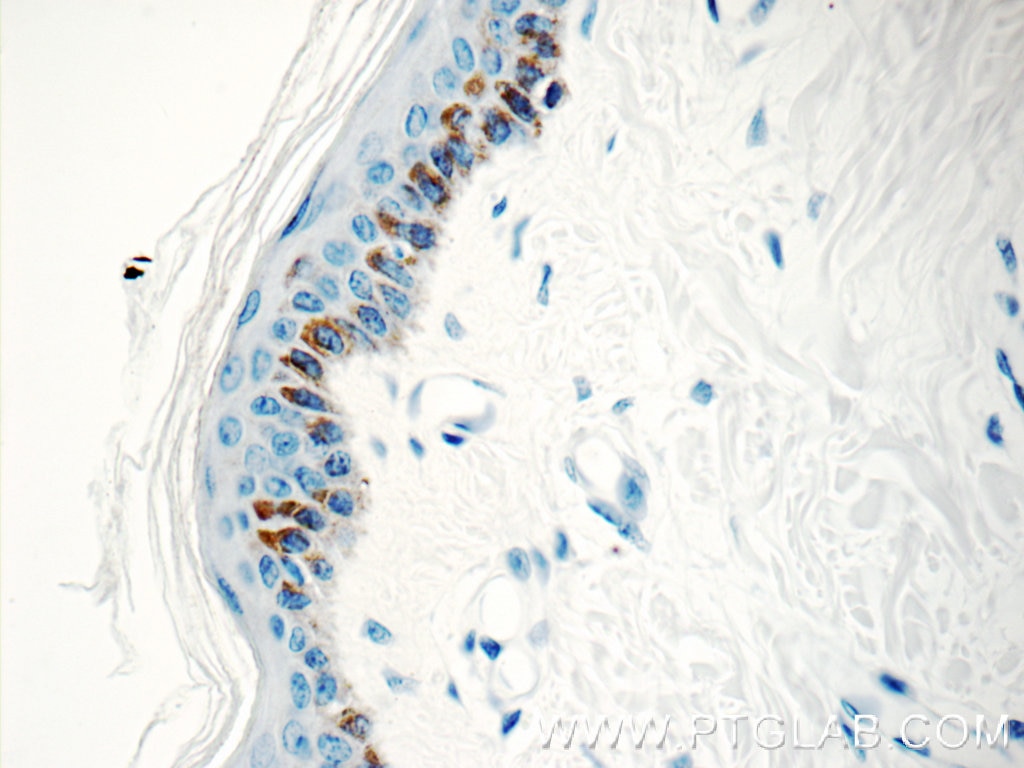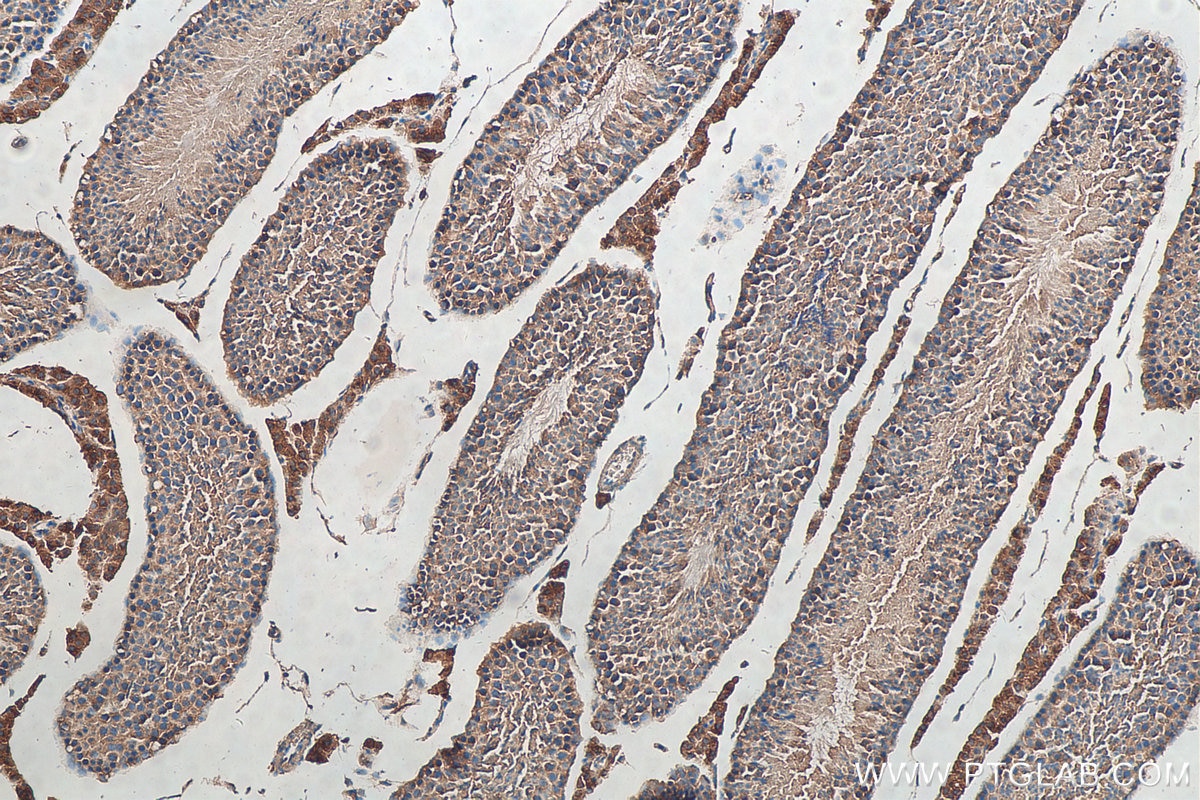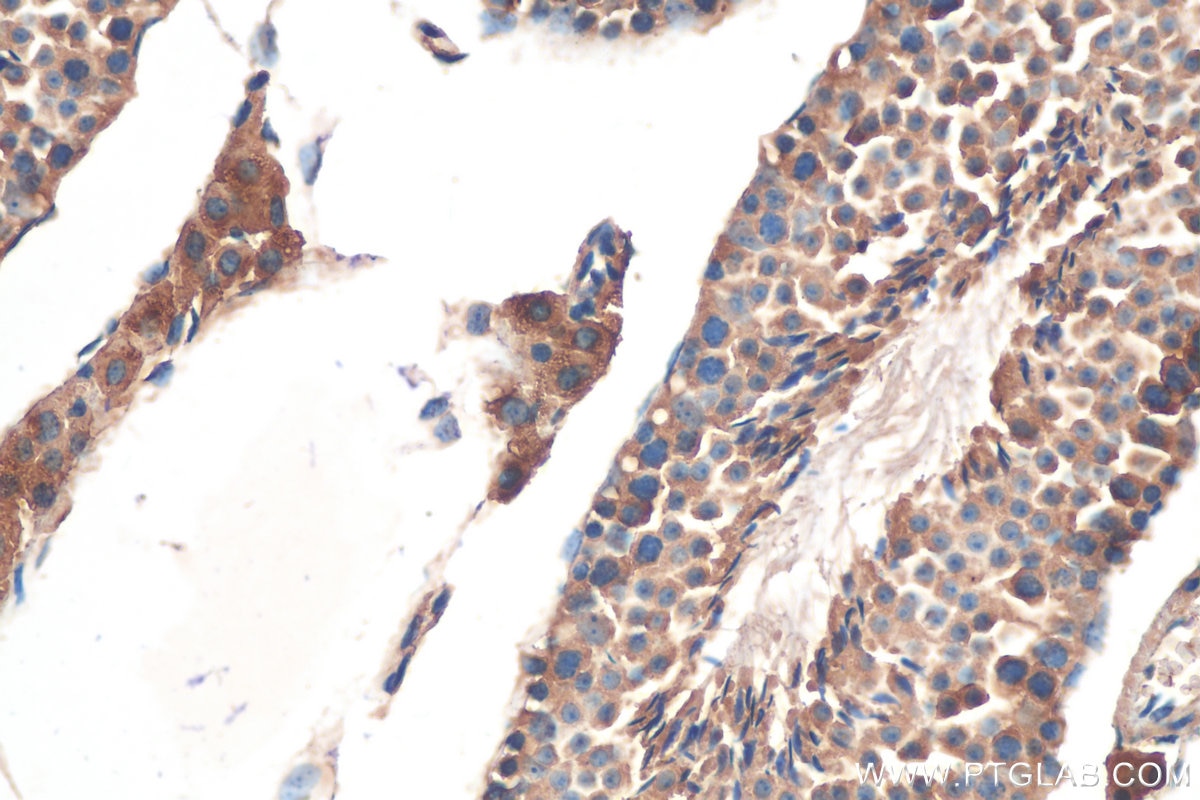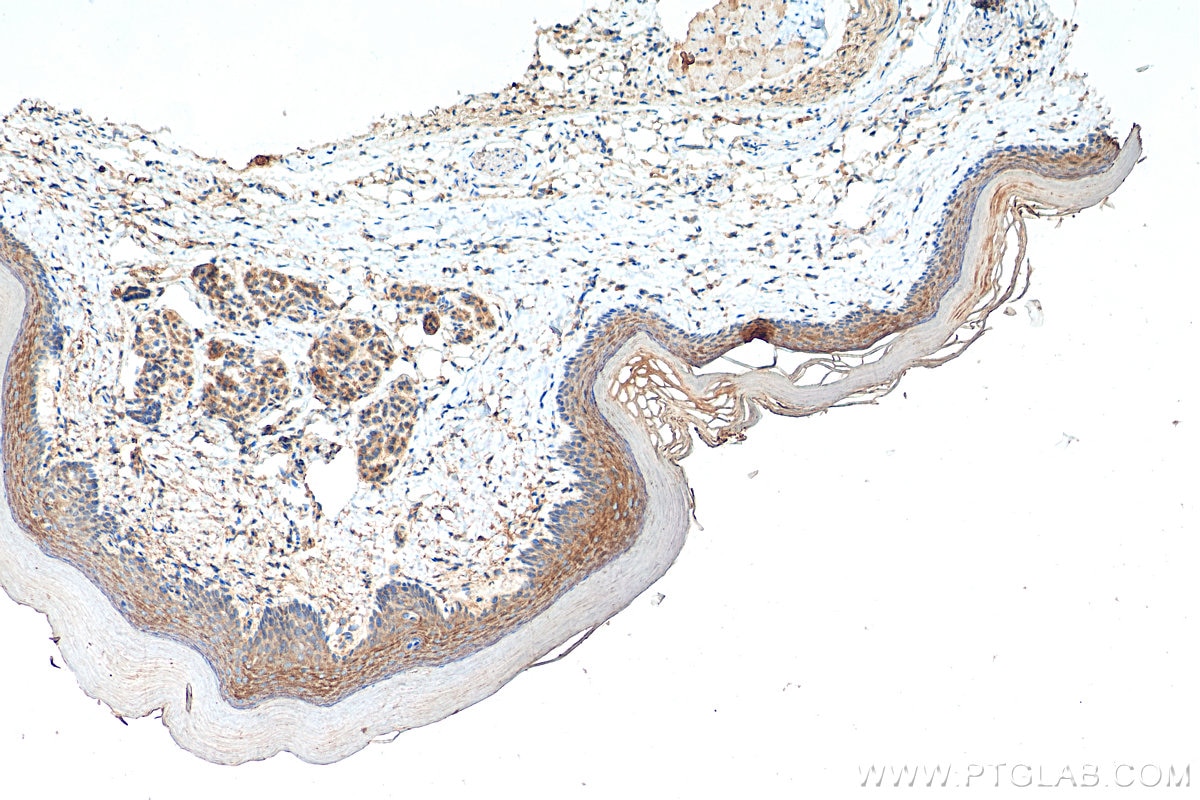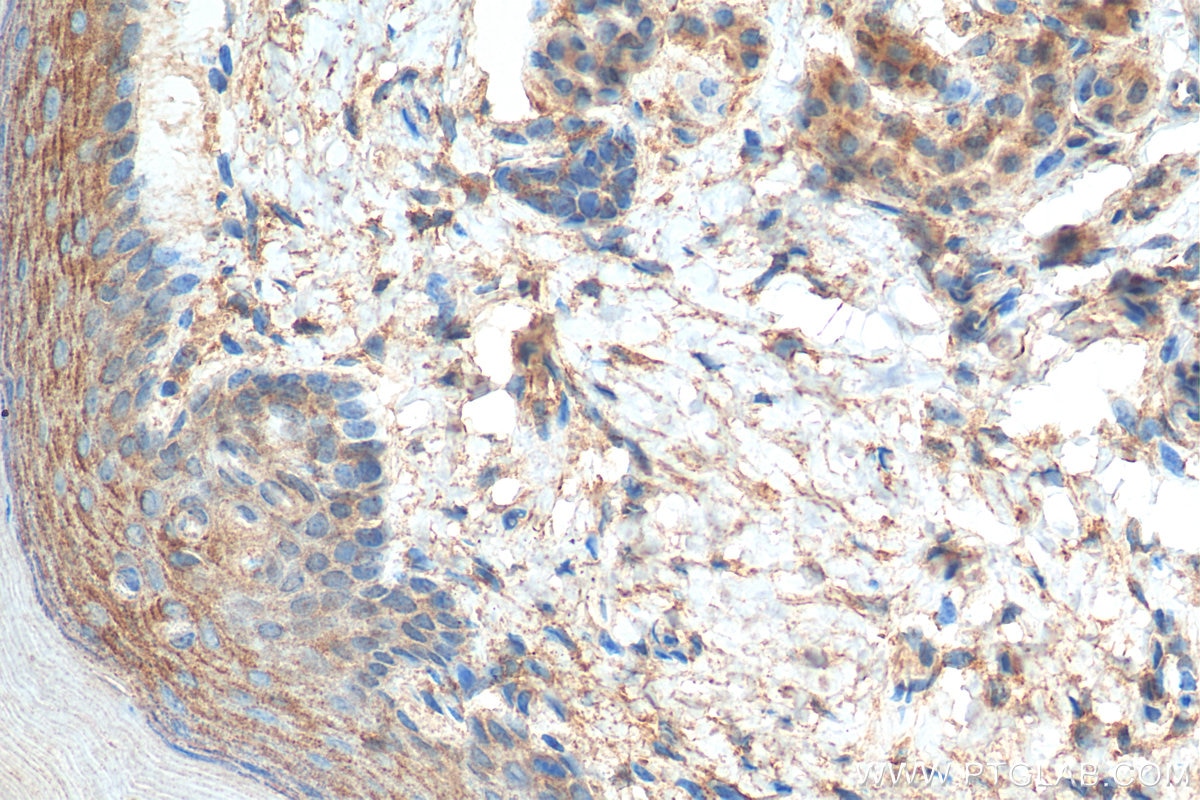Kallikrein 5 Polyklonaler Antikörper
Kallikrein 5 Polyklonal Antikörper für IHC, ELISA
Wirt / Isotyp
Kaninchen / IgG
Getestete Reaktivität
human, Maus
Anwendung
WB, IF, IHC, ELISA
Konjugation
Unkonjugiert
Kat-Nr. : 10514-2-AP
Synonyme
Geprüfte Anwendungen
| Erfolgreiche Detektion in IHC | humanes Hautgewebe, Maushautgewebe, Maushodengewebe Hinweis: Antigendemaskierung mit TE-Puffer pH 9,0 empfohlen. (*) Wahlweise kann die Antigendemaskierung auch mit Citratpuffer pH 6,0 erfolgen. |
Empfohlene Verdünnung
| Anwendung | Verdünnung |
|---|---|
| Immunhistochemie (IHC) | IHC : 1:20-1:200 |
| It is recommended that this reagent should be titrated in each testing system to obtain optimal results. | |
| Sample-dependent, check data in validation data gallery | |
Veröffentlichte Anwendungen
| WB | See 2 publications below |
| IHC | See 2 publications below |
| IF | See 1 publications below |
Produktinformation
10514-2-AP bindet in WB, IF, IHC, ELISA Kallikrein 5 und zeigt Reaktivität mit human, Maus
| Getestete Reaktivität | human, Maus |
| In Publikationen genannte Reaktivität | human |
| Wirt / Isotyp | Kaninchen / IgG |
| Klonalität | Polyklonal |
| Typ | Antikörper |
| Immunogen | Kallikrein 5 fusion protein Ag0799 |
| Vollständiger Name | kallikrein-related peptidase 5 |
| Berechnetes Molekulargewicht | 32 kDa |
| GenBank-Zugangsnummer | BC008036 |
| Gene symbol | KLK5 |
| Gene ID (NCBI) | 25818 |
| Konjugation | Unkonjugiert |
| Form | Liquid |
| Reinigungsmethode | Antigen-Affinitätsreinigung |
| Lagerungspuffer | PBS with 0.02% sodium azide and 50% glycerol |
| Lagerungsbedingungen | Bei -20°C lagern. Nach dem Versand ein Jahr lang stabil Aliquotieren ist bei -20oC Lagerung nicht notwendig. 20ul Größen enthalten 0,1% BSA. |
Hintergrundinformationen
KLK5(Kallikrein-5) is also named as SCTE and belongs to the kallikrein subfamily. This protein is predicted to be a secreted serine protease, and the enzyme is found to have proteolytic activity. In serum and ascites fluid, the protein is present in two forms, one at a relatively lower molecular mass (around 50 kDa), and another one around 150-180 kDa and native KLK5 is highly glycosylated or that it may interact with the gel filtration column, leading to delayed retention(PMID:12873991). The activation of the enzyme has been shown to require cleavage of an arginine residue (Arg66-Ile67), suggesting that a trypsin-like serine protease may be involved in this process(PMID:15713679).
Protokolle
| PRODUKTSPEZIFISCHE PROTOKOLLE | |
|---|---|
| IHC protocol for Kallikrein 5 antibody 10514-2-AP | Protokoll herunterladenl |
| STANDARD-PROTOKOLLE | |
|---|---|
| Klicken Sie hier, um unsere Standardprotokolle anzuzeigen |
Publikationen
| Species | Application | Title |
|---|---|---|
Cancer Biomark Salivary KLK5 and uPA are potential biomarkers for malignant transformation of OLK and OLP | ||
J Dermatol Sci Dichotomous effect of ultraviolet B on the expression of corneodesmosomal enzymes in human epidermal keratinocytes. | ||
Cell Death Dis Long noncoding RNA HEIH depletion depresses esophageal carcinoma cell progression by upregulating microRNA-185 and downregulating KLK5. |
